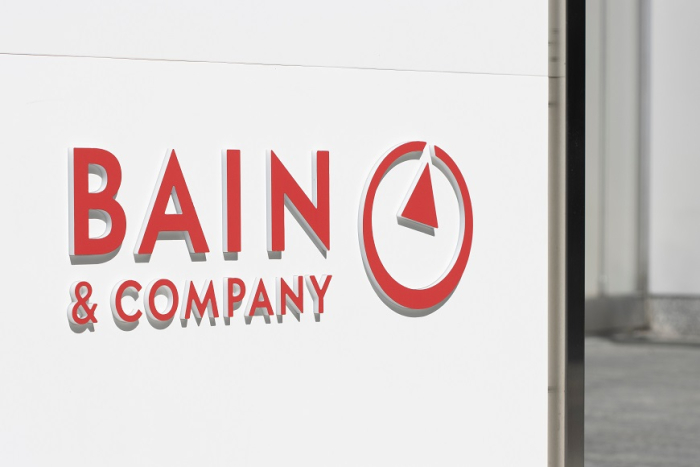
 Data Structure
Data Structure Networking
Networking RDBMS
RDBMS Operating System
Operating System Java
Java MS Excel
MS Excel iOS
iOS HTML
HTML CSS
CSS Android
Android Python
Python C Programming
C Programming C++
C++ C#
C# MongoDB
MongoDB MySQL
MySQL Javascript
Javascript PHP
PHP
- Selected Reading
- UPSC IAS Exams Notes
- Developer's Best Practices
- Questions and Answers
- Effective Resume Writing
- HR Interview Questions
- Computer Glossary
- Who is Who
What is an Innovative Growth Strategy?
A unified innovation objective and plan that aims to produce new value that customers are willing to pay for is known as an innovation strategy. It consists of a collection of guidelines or measures intended to spur further expansion of the company.
The most creative businesses are aware that brilliant new ideas don't just appear. Instead, innovation arises from settings and procedures that are intended to promote it. As strategy is the utilization of marketing, operations, finance, research, development, etc. to achieve competitive goals, whereas innovation is the creation of new value that people are ready to use and pay for. is the strategy.
Importance of Innovative Growth Strategy
To be clear, an innovation strategy is a mapping of an organization's goal, vision, and value proposition to a specific target consumer market rather than an innovative approach like holding an idea competition. We restrict expectations for innovation performance by streamlining and organizing innovation activity to provide the best outcomes.

Innovation is the process of generating something new that benefits both the organisation and its customers. There are many different kinds of innovation, but whenever we hear about business innovation, new goods and services are frequently mentioned. The most frequent innovations are those that include goods, services, and procedures. The fundamental issue with innovation is that people tend to focus too much on products and services and not enough on other innovation goals that are all around us. Companies can innovate in a variety of ways to stay competitive in their sector. Companies innovate for a variety of reasons, such as lower costs, higher profitability, competitive advantage, talent attraction, leadership image development, and funding and investor attraction.
Because it is challenging to foresee the processes, timing, and impact of innovation, innovation strategy is different from many corporate strategies.
A company's innovative strategy informs decisions about how to allocate resources in order to fulfil its innovative objectives, provide value to customers, and gain a competitive edge.
The plan ought to incorporate ?
Analysis of the technical environment and the business competitive environment
Its unique assets are its external opportunities and challenges.
This manual explains how to go about creating an innovation strategy.
Types of Innovation Strategy
A few innovations are dependent on the advancement of technology, while others are based on creative commercial methods. Both are worthwhile and significant. The types of innovation that the organization prioritizes should be included in an innovation strategy. Researchers claim that there are primarily four different types of innovation. Whether an innovation is founded on new or established technology is determined by the technology's novelty. Though ideas with little immediate commercial impact are simpler to implement, their impact grows over time. High-impact ideas are typically risky, expensive, and difficult to create, but they offer a lot of potential value.
Disruptive Innovation
The most well-known form of innovation is frequently disruptive innovation. It offers high-impact outcomes and effective use of modern technology. Disruptive innovation has numerous complexities and obstacles, even though it is quite showy and makes headlines. Startups that target underserved market groups in order to provide a solution that is more accessible, convenient, or straightforward than what the established players can give are the organizations that most frequently demonstrate the characteristics of disruptive innovation.
Incremental Innovation
The continual and incremental improvement of an existing good or service is known as incremental innovation. It delivers the most evident value for established returns despite being the least noticeable of all the categories. Businesses can overcome stagnation and steadily grow their market share by constantly upgrading their goods, services, and operational procedures.
Sustaining Innovation
The best method to safeguard a company's place in the market is to maintain innovation. Small adjustments to current goods and services are the subject of incremental innovation, which seeks to boost their worth or improve customer pleasure. Greater change is the aim of sustainable innovation in order to acquire or hold a dominant position in the market. This category focuses on developing novel features or offerings that set your product apart from rivals.
Radical Innovation
Technological advances are frequently used in radical innovations to reshape markets and industries. This kind of innovation fundamentally alters how businesses engage with the market. Organizational behavior and enterprises' capacity to foster the ideal environment for the successful commercialization of new ideas are frequently linked to the success of the underlying technological revolution that fuels this form of innovation.
Examples of Innovation Growth Strategy
Empathy for the end user, objectivity, adaptability, trust, and perseverance are necessary for a successful innovation strategy. It's a significant challenge. especially in large firms with scalable innovation processes. A few examples relating to this are as follows
Dexcom
Dexcom concentrates on a small number of intricately complex issues. Using a continuous blood glucose meter, assist people in managing their diabetes. The company chose to make significant adjustments rather than giving in to the impulse to make little, incremental product improvements. This strategy was strengthened by a collaboration with Verily Life Sciences, a division of Alphabet, the parent company of Google.
Bain & Company
Bain & Company examined the growth-promoting practises of 1,850 businesses to ascertain how profitable, sustainable growth is achieved by successful businesses. They have discovered that businesses can grow most profitably when they enter nearby target markets.

The use of go-to-market as a strategy for corporate expansion is seen in Facebook. At first, they were restricted to Harvard students only. From then, it spread to Yale, Columbia, and Stanford. The portal was then made accessible to all Ivy League and Boston-area schools. Since then, it has opened up access to universities in Canada and the United States.
Conclusion
Making the best decision out of a wide range of plausible choices is the goal of an innovation growth strategy. Finding and mapping the best possible strategic choices needed for success is necessary for the best possible innovation plan to be effective.
Making these choices, though, is only half the struggle. Validating and testing your strategy are equally crucial. Your innovation plan must be aligned with your workflow and seamlessly integrated into it to be successful. Innovation can be consistently practiced with clear communication and support measures at the corporate and individual levels.

